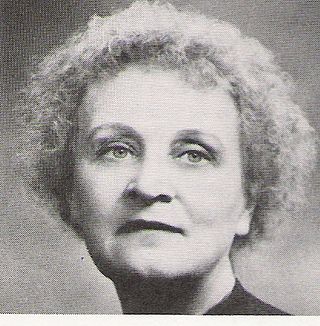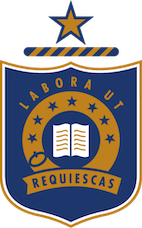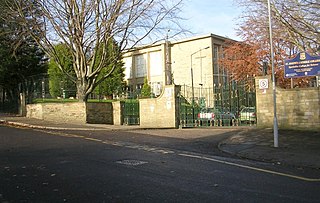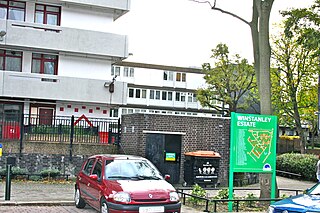
Wandsworth is a London borough in South West London, England. It forms part of Inner London and has an estimated population of 329,677 inhabitants. Its main communities are Battersea, Balham, Putney, Tooting and Wandsworth Town.

The Dalton School, originally the Children's University School, is a private, coeducational college preparatory school in New York City and a member of both the Ivy Preparatory School League and the New York Interschool. The school is located in four buildings within the Upper East Side of Manhattan. In the 2023–24 academic year, tuition rates totaled $61,120.
The Dalton Plan is an educational concept created by Helen Parkhurst. It is inspired by the intellectual ferment at the turn of the 20th century. Educational thinkers such as Maria Montessori and John Dewey influenced Parkhurst while she created the Dalton Plan. Their aim was to achieve a balance between a child's talent and the needs of the community.

Helen Parkhurst was an American educator, author, lecturer, the originator of the Dalton Plan, founder of the Dalton School and host of Child's World with Helen Parkhurst on ABC Television Network. Parkhurst took her cues from developmental psychologist Jean Piaget and education reformers such as John Dewey and Horace Mann, producing a progressive education philosophy emphasizing the development of the "whole child".

Caulfield Grammar School is a private, co-educational, Anglican, International Baccalaureate, day and boarding school, located in Melbourne, Victoria, Australia. Founded in 1881 as a boys' school, Caulfield Grammar began admitting girls exactly one hundred years later. The school amalgamated with Malvern Memorial Grammar School (MMGS) in 1961, with the MMGS campus becoming Malvern Campus.

Firbank Grammar School is an independent, Anglican, day and boarding school, situated in the suburb of Brighton, in the Bayside area of Melbourne, Australia.
Graveney School is a secondary school and sixth form with academy status in the Furzedown area of Tooting, southwest London, England. The school has a partially selective admissions policy. At the beginning of 2023, the school was assessed in an Ofsted inspection report as outstanding.

The John Roan School is a co-educational secondary school and sixth form located in Greenwich, south-east London, England.

Ascham School is an independent, non-denominational, day and boarding school for girls, located in Edgecliff, an Eastern Suburb of Sydney, New South Wales, Australia.
Camberwell Girls Grammar School is a private Anglican early learning, primary and secondary day school for girls located in Canterbury, an eastern suburb of Melbourne, Victoria, Australia. Founded in 1920 in the hall of St Mark's Church in Camberwell, the school welcomes students of all cultures and currently caters for 820 students from Early learning to Year 12.

Streatham & Clapham High School is a private day school for girls aged 3 to 18, in south London. The school was founded in 1887 by the Girls' Public Day School Company, which established schools for girls providing academic, moral and religious education.

The Falconbrook was a stream that rose in Balham and Tooting, draining much of those parishes then the south and west of the larger district of Battersea including Clapham Junction to enter the London reaches of the Thames. Before doing so, it briefly formed the border of Wandsworth Town, reflected in the SW11/SW18 boundary today.
Battersea Grammar School was a Voluntary-Controlled Secondary Grammar School in South London. It was established in Battersea in 1875 by the Sir Walter St John Trust and moved to larger premises in Streatham in 1936.
Furzedown Secondary School was a mixed comprehensive school in South London. It was established in Welham Road on the boundary between Streatham and Tooting in 1977, following the amalgamation of Battersea Grammar boys' school and Rosa Bassett girls' grammar school.
Rosa Bassett, MBE, BA was an English educationalist and headmistress of Stockwell Secondary School. After a relocation from Stockwell the school's name was changed to County Secondary School, Streatham. Located in Welham Road, London, it was later renamed Rosa Bassett School in her memory and honour.
Camborne Grammar School in Camborne, Cornwall, was a girls' grammar school between 1908 and 1976.

St Joseph's Catholic College was a state Roman Catholic Girls' school situated in Manningham, close to Bradford city centre in West Yorkshire, England. The school merged with St. Bede's Grammar School in September 2014 to form St Bede's and St Joseph's Catholic College.
The Peterborough County Grammar School for Girls was an all-female grammar school in Peterborough, Cambridgeshire, England.
South Park High School, Lincoln, opened in 1922 and closed in 1989, was a secondary school in Lincoln, England.

The Winstanley and York Road Estate comprises two large estates of predominantly public housing apartments in Battersea, London, adjacent to Clapham Junction railway station, although some have since passed into private ownership.













